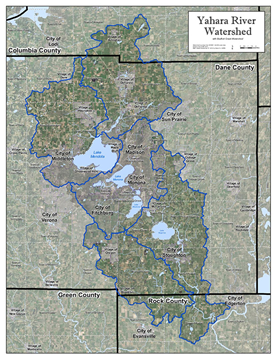Most of us who spend time on lakes know they can “green up” as they warm up. Excess phosphorus generates that not-so-healthy green bloom.
 The Yahara watershed is trying something novel. The watershed surrounds Madison, Wisconsin and has at its center the iconic lakes Mendota and Monona. Even with a state capitol and population of 370,000, it’s primarily agricultural.
The Yahara watershed is trying something novel. The watershed surrounds Madison, Wisconsin and has at its center the iconic lakes Mendota and Monona. Even with a state capitol and population of 370,000, it’s primarily agricultural.
The new approach — led by the Madison Metropolitan Sewerage District, in partnership with Dane County, Wisconsin DNR, and local governments — works this way: Rather than build three new wastewater treatment plants at a cost of $270 million, why not spend less than half that to tackle the problem where it starts?
The coalition pooled $2 million to pay for approved, phosphorus-reducing measures. A pilot project that began in 2014 targeted the biggest loaders. Full-scale implementation of the 20-year pact began this year. Results will be demonstrated though ongoing monitoring, and lakes that aren’t green anymore.
By Carrie Jennings, research and policy director